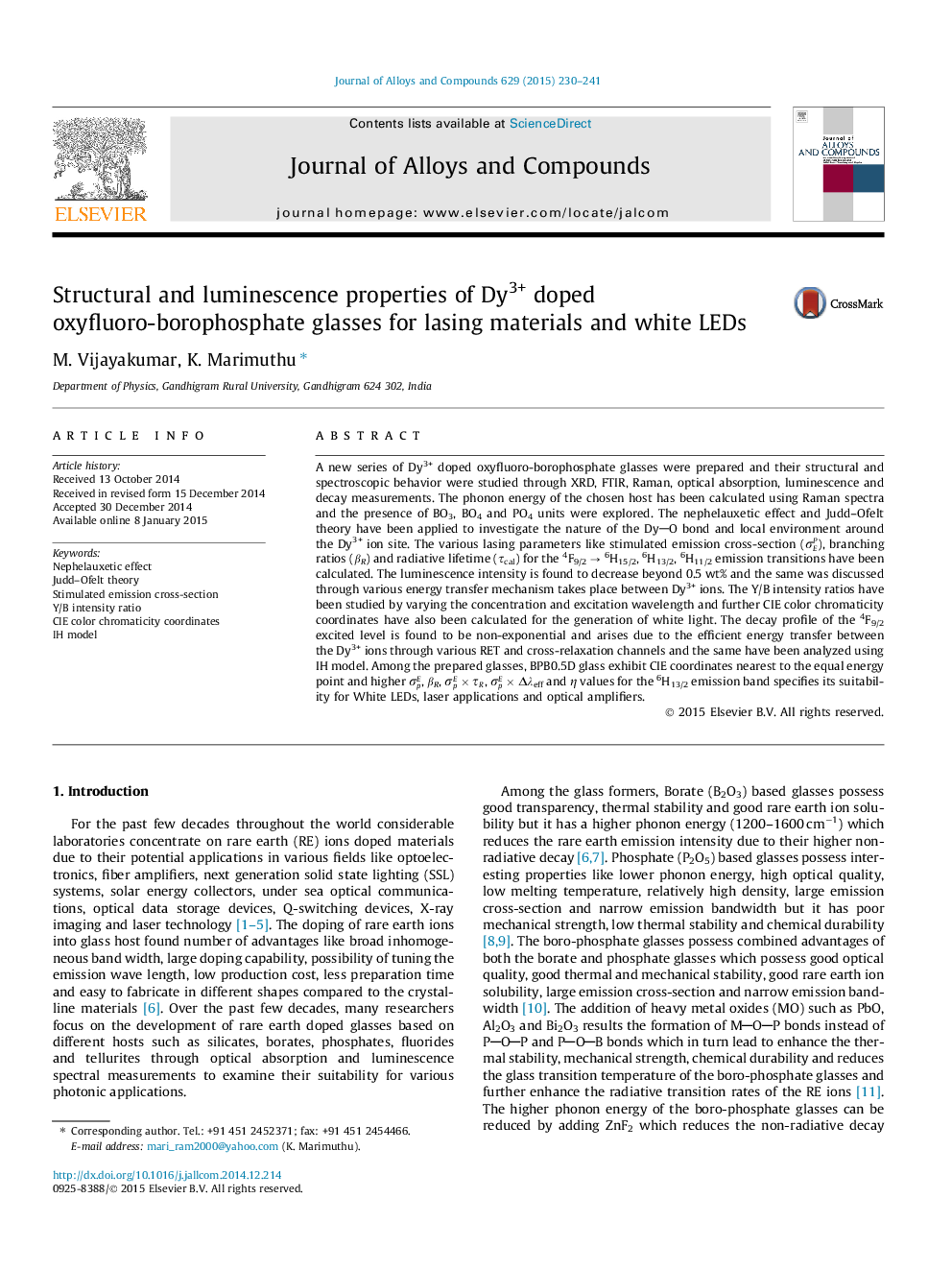| Article ID | Journal | Published Year | Pages | File Type |
|---|---|---|---|---|
| 1609740 | Journal of Alloys and Compounds | 2015 | 12 Pages |
•The phonon energy of BPBxD glasses are found to be 1123 cm−1.•JO parameters follows the trend as Ω2 > Ω4 > Ω6 uniformly for all the BPBxD glasses.•Higher value of the Y/B ratio indicates higher symmetry around the Dy3+ ion site.•IH fitted to S = 6 indicates dipole–dipole interaction dominates in the Dy3+–Dy3+ ions.•CIE 1931 chromaticity coordinates confirm its suitability for WLED applications.
A new series of Dy3+ doped oxyfluoro-borophosphate glasses were prepared and their structural and spectroscopic behavior were studied through XRD, FTIR, Raman, optical absorption, luminescence and decay measurements. The phonon energy of the chosen host has been calculated using Raman spectra and the presence of BO3, BO4 and PO4 units were explored. The nephelauxetic effect and Judd–Ofelt theory have been applied to investigate the nature of the DyO bond and local environment around the Dy3+ ion site. The various lasing parameters like stimulated emission cross-section (σEP), branching ratios (βR) and radiative lifetime (τcal) for the 4F9/2 → 6H15/2, 6H13/2, 6H11/2 emission transitions have been calculated. The luminescence intensity is found to decrease beyond 0.5 wt% and the same was discussed through various energy transfer mechanism takes place between Dy3+ ions. The Y/B intensity ratios have been studied by varying the concentration and excitation wavelength and further CIE color chromaticity coordinates have also been calculated for the generation of white light. The decay profile of the 4F9/2 excited level is found to be non-exponential and arises due to the efficient energy transfer between the Dy3+ ions through various RET and cross-relaxation channels and the same have been analyzed using IH model. Among the prepared glasses, BPB0.5D glass exhibit CIE coordinates nearest to the equal energy point and higher σpE, βR , σpE × τRτR, σpE × Δλeff and η values for the 6H13/2 emission band specifies its suitability for White LEDs, laser applications and optical amplifiers.
Graphical abstractFigure optionsDownload full-size imageDownload as PowerPoint slide
